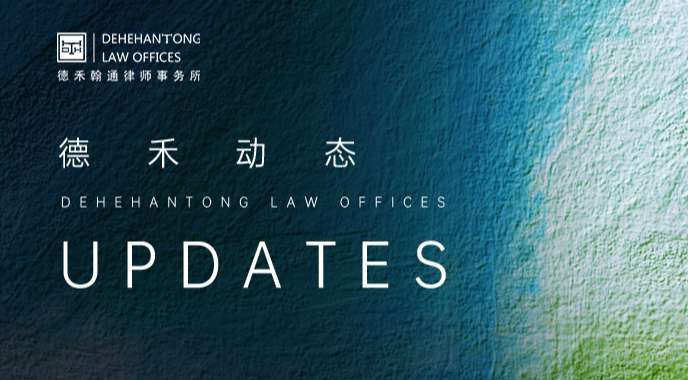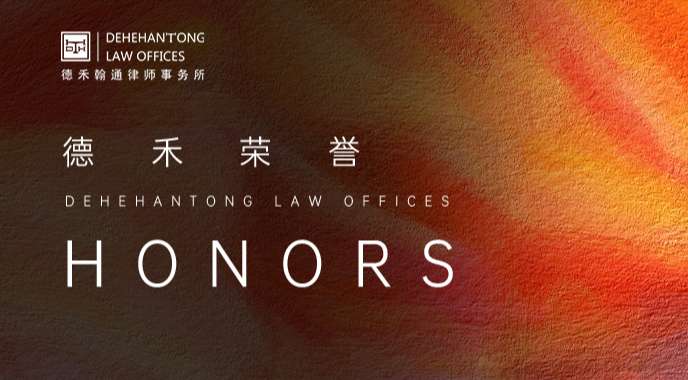Dehehantong represented a huge creditor's rights dispute case and successfully reversed the outcome and changed the judgment
In complex and difficult financial dispute resolution cases, Dehehantong Law Office has always safeguarded the legitimate rights and interests of its clients with its outstanding professional capabilities. Recently, in a major financial creditor's rights dispute case, in the passive situation where the client lost the first instance, Qiu Wenyu, the director of the Shanghai Management Committee and a member of the National Management Committee of Dehehantong, and Yang Yiqin, a partner of the Shanghai office, accepted the agency commission in the second instance. Relying on the outstanding wisdom and unremitting efforts of the team, It has safeguarded the creditor's rights and interests of the clients, with a principal amount exceeding 1 billion yuan and principal and interest exceeding 1.7 billion yuan!
01 Case Background
The client of this case is a sub-fund under a state-owned asset management company, which provides project financing for a well-known domestic real estate developer in the form of "small shares and large bonds".
In 2017, developer Company A, the client and Company B jointly signed a "Tripartite Cooperation Agreement". The three entities respectively held the equity of Company C and, through Company C, held 100% control over the real estate development project entity Company D. The Tripartite Cooperation Agreement also stipulates that the principal will provide financing funds to Company C in the form of shareholder loans to support the subsequent development of the real estate projects under the name of Company D. On the same day, the parties signed two "Loan Contracts", under which the principal provided a loan of 1.756 billion yuan to Company D, of which 1.317 billion yuan was disbursed by the principal on behalf of Company B. Company B provided a pledge guarantee for this claim with the equity it held in Company C and assumed joint and several liability for the guarantee.
In 2018, the principal signed a "Joint Debt Confirmation Agreement" with Company C and Company D, confirming Company D as a joint debtor. At the same time, Company A issued a "Commitment Letter" to the client, promising to assume general guarantee liability for the debt.
Later, as Company C failed to repay the debt as agreed, the principal filed A lawsuit with the people's court, demanding that Company C and Company D repay the principal of 1.041 billion yuan and the corresponding interest, and that Company A and Company B assume the corresponding guarantee responsibility.
During the first instance trial of the case, the defendants put forward multiple defense opinions, mainly including: The funds involved in the case were equity capital contributions rather than creditor's rights in nature; The nature of the repaid funds is not to repay the loan but to distribute profits to shareholders. The principal has no right to claim the return of the funds on behalf of Company B. The "Commitment Letter" issued by Company A does not have the legal effect of a general guarantee, etc. The court of first instance, after trial, held that the funds involved in the case were not merely a loan and directly dismissed all the litigation requests of the client.
02 The main points of contention and difficulties
The main points of dispute in this case are as follows:
(1) Are the funds involved in the case equity investment or debt financing?
(2) Can the principal file a lawsuit against the funds distributed on behalf of Company B and demand that the debtors, Company C and Company D, repay the principal and interest of the entire debt to the principal?
(3) Is the agreement on the sequence of project fund allocation in the "Tripartite Cooperation Agreement" a prerequisite for repayment?
(4) Does the "Commitment Letter" issued by Company A have the effect of a general guarantee?
The loss of each of the above-mentioned disputed points may lead to the rejection of the client's litigation request.
03 Litigation Strategies
After accepting the commission, the legal team conducted an in-depth analysis of the case details and formulated a precise strategy for the second instance. Within the limited time before the second instance trial was approaching, we carefully sorted out the evidence materials provided by all parties in the first instance, repeatedly reviewed the trial records of the first instance and identified the suspicious points in the details, went through all the project's archival materials, and inquired with the client about the background of the cooperation and the performance of the agreements over the years. The legal team closely focused on the core points of dispute in the case, created visual charts, sorted out the relationships among the various parties involved in the case, the transaction structure of the project and its underlying logic, and provided more than ten items of hundreds of pages of evidence materials on the basis of the original evidence from the first instance, as well as over ten judgments of similar cases from the Supreme People's Court and higher people's courts of various provinces and cities and analyses of the trial ideas of similar cases.
During the second instance trial, the legal team conducted arguments from multiple aspects, including the concepts of investment and financing, the cooperation models of all parties, the performance of the contract, and the determination of the nature of the involved funds by third-party professional institutions and national financial regulatory authorities. They accurately defined the nature of the creditor's rights and meticulously argued the legal relationship of the involved dispute. At the same time, based on the literal meaning of the "Loan Contract" and the actual performance of all parties, it is analyzed that the act of the principal disbursing the loan on behalf of Company B is not an agency, and the creditor status of the principal for the two loans is clarified. Crush the two fallacious arguments put forward by the defendant, namely the "profit distribution theory" and the "repayment precondition theory", and clarify that the loan contract is prematurely due to overdue repayment, and the client's lawsuit request has both contractual and legal basis. And fully demonstrate the validity of the general guarantee liability as stipulated in the "Commitment Letter" from aspects such as the background and procedures of issuing the "Commitment Letter", as well as the applicable laws and relevant judicial interpretations.
After the trial, the legal team submitted over a hundred pages of written agency opinions and a similar case search report in response to the disputed points during the trial, the opinions of all parties in presenting and cross-examining evidence, as well as the debate opinions they expressed, laying a solid foundation for the successful reversal of the case.
04 The outcome of the agency
Through the joint efforts of the client and the legal team, the case was remanded for retrial by the second-instance court. The first-instance retrial ruled that Company C and Company D should repay the principal and interest of the loan to the client, and Company B should pay the fund occupation fee for the principal of the loan issued on behalf of the client, with a total amount exceeding 1.7 billion yuan. Moreover, all guarantee measures such as equity pledge, joint and several guarantee, and general guarantee were supported by the court. Subsequently, the defendants were dissatisfied with the first-instance judgment of the retrial and appealed to the provincial higher People's Court. The case was retried for the second instance. Eventually, the provincial higher People's Court ruled to reject the appeal and uphold the original judgment of the first instance. So far, this case has lasted for more than two years. With the efforts of our firm's legal team, the judgment result has been successfully reversed.
05 Precedent Significance
In the tide of China's real estate market, the model of "equity + debt" combined for project cooperation and development has become a common and important business practice. This model provides flexible financing channels for real estate development enterprises and has become an important force driving the development of the industry. Under this model, the investor usually achieves the commercial purpose of providing financing for the real estate project through a complex transaction structure of acquiring part of the equity of the real estate project company and simultaneously providing shareholder loans to the project company.
Through this case, the hidden concerns of the "equity + debt" model have also been magnified: How can funds be injected and used within the legal scope? How can the boundary between shareholder loans and equity investments be clarified? How should benefits and risks be fairly distributed? When the market is in a downturn and projects are in trouble, some developers attempt to evade their debt repayment obligations under the guise of "collusion", thereby eroding the legitimate rights and interests of other partners. The final victory of this case not only concerns the significant interests of the client, but also shoulders the important responsibility of stabilizing market expectations and restoring the confidence of financial institutions and investors. The judgment rules of this case are expected to set a benchmark for resolving disputes over financing in the real estate market and help the real estate industry smoothly navigate through the period of deep adjustment.
-
Prev:Dehehantong's successful mitigating defense: A Comprehensive Consideration of Evidence Mining and the timing of guilty plea and acceptance of punishment
-
Next:Dehehantong successfully represented a criminal case involving a fraud of 3 million yuan - the police lawfully withdrew the case on the grounds of "no criminal facts"















